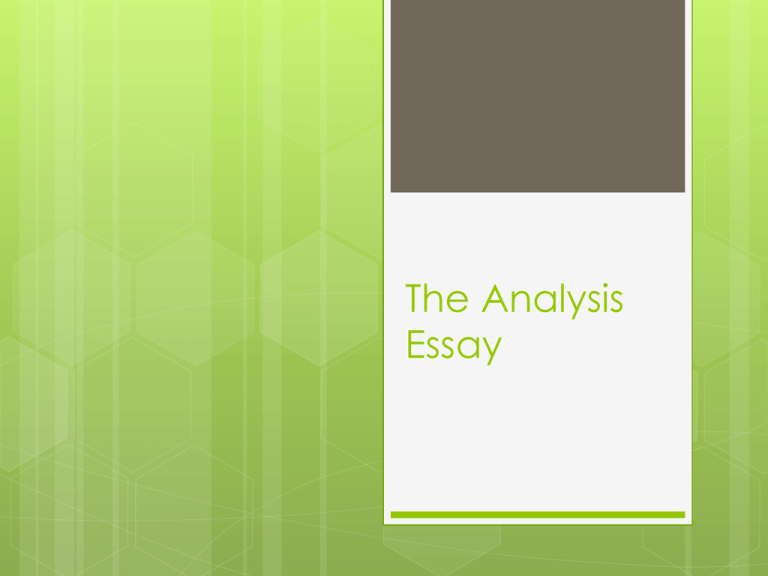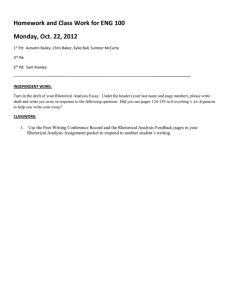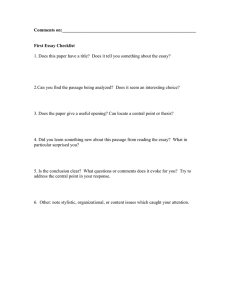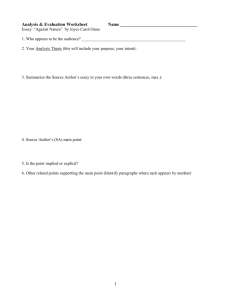The Analysis Essay
advertisement

The Analysis Essay ICE Introduce- What does this mean? Cite-What is the writer’s purpose? Explain- What is the effect? Make a connection between the text and meaning, purpose, and effect. For the essay, give your understanding of meaning, purpose, and effect, and then flesh out the rhetorical strategies used by the author Big and Little Question Each prompt will have a main clausewhich is the big question they are asking– and then a dependent clause- which is the little question. Usually the big question is what is their intended effect (what do they want?) and the small question is the specific rhetorical strategies they use to achieve it (how do they get there?). Says/Does What a passage says is different from what it does. Make sure you can distinguish the difference. Says= summary of the passage itself. Does=the effect of the passage/the purpose of it For the Analysis Essay Remember you can use my formula for times’ sake: (The author) uses meaningful diction, syntax, and figurative language in order to (insert his or her specific rhetorical purpose). You don’t have to– but it’s a nice fallback and will get you where you need to go. Remember: Discussing purpose & effect( WHY the author uses the device or what his/her intended effect is) is more important than listing terms Diction= word choice that is meaningful– takes connotation into account and helps set up a tone, a mood, or a theme. Syntax=rules of language– sentence length, structure, punctuation, word order, active vs. passive verbs, repetition, etc. Figurative Language= language that isn’t literal, i.e. metaphors, symbolism, allusions, etc. Tips Discussing purpose & effect is always much more important than listing terms Read the prompt carefully and make sure you know exactly what is being asked before you dive right in (attempt to figure out the Big and Little Questions) Reading the background information at the top of the source will help you identify anything strange about a piece– including if it’s satirical in nature, or if it’s a bogus source (they have been known to try to trick students this way in the synthesis essay). This information can also tell you who wrote the passage/source, why they’re relevant, and, possibly most helpfully, can place it in an appropriate historical context that can get you making connections and give you a starting point. Don’t explain the terms Remember your audience Your reader knows what polysyndeton is, asyndeton, etc. Your reader is a college professor or an experienced AP Teacher If you can’t remember the technical term, or freeze up, discuss punctuation or diction, or ANYTHING you feel might be purposeful or have an effect Think like the College Board The front line and the last line of the piece will be important Discuss their function Rhetorical Analysis : Just like with the synthesis essay, you never want to just cut and paste long quotations into your paper. Use only the part of the quote you need for your essay. You still must use direct or indirect quotations (preferably both). Pointing out and discussing the INTENDED EFFECT of any rhetorical device is imperative. This is why it’s called an analysis paper: you are analyzing how certain strategies can improve the author’s writing, not just pointing them out or naming them. Let’s look at a good tip sheet: H Drive… AP stuff… Advice for Analysis Essay



